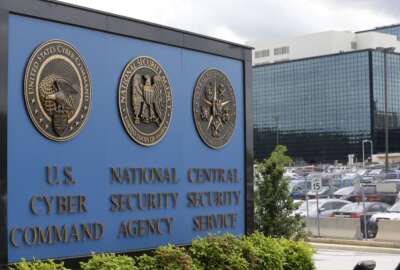Sponsored by T-Mobile
Navy confronting hurdles to implementing 5G-enabled technologies at scale
5G makes exciting emerging technologies possible, but first the Department of the Navy has to solve spectrum integration, cybersecurity and acquisition hurdles.
The Defense Department spent years conducting various 5G proof-of-concept pilots in locations across the country. These pilots led to a great deal of optimism and enthusiasm for the possibilities 5G enables, but they also revealed a number of challenges to overcome. This is especially true for the Department of the Navy (DoN), with its unique operating environment: Ships at sea need to maintain their connectivity, but also link up to and take advantage of terrestrial networks when they’re pier-side.
“So how do we, the Navy at large, start to look like an Amazon warehouse?” David Sass, line of effort lead on the DoN 5G Integrated Product Team, said on Federal Monthly Insights — The Future of 5G for DoD and Critical Infrastructure Organizations. “How do we start turning around material ten times faster to be able to get that to our warfighter at the edge? So we really ultimately want to leverage the innovation and enable those capabilities. 5G is really the architecture for the network.”
The spectrum is one of DoN’s biggest concerns: Frequencies used within the continental United States (CONUS) are different from those overseas. That means conducting negotiations and having agreements in place with other nations regarding how that will work.
Further complicating the matter of integrating spectrums, the Navy is looking at both private 5G networks for ships at sea, as well as proliferated low-earth orbit satellites like Starlink, which differs even more in terms of spectrum used.
“We have had some success with some pilot sites, pilot efforts with StarLink on our carriers being able to use that for … morale, welfare and recreation on the ships,” Sass told The Federal Drive with Tom Temin. “We’ve seen some great success there. And just really taking that a step further for the DoN at large to be able to enable them to have that ubiquitous level of connectivity through that convergence of 5G and PLEO, and even [medium earth orbit] and [geostationary] type satellites.”
Securing 5G
That range of different types of connectivity also creates cybersecurity challenges; Sass said there’s “no one-size-fits-all type of policy with all these different communication channels.” That said, implementing a zero trust architecture and the hundreds of controls that entails is necessary. And new framworks are emerging as well, such as the MITRE FiGHT 3.0, which specifically deals with 5G.
Another complication is the wide range of 5G devices the Navy needs to secure. Phones, tablets and other mobile devices tend to be what people immediately think of, but there’s a wide range of Internet of Things devices as well that the Navy wants to integrate. Those include sensors for supervisory control and data acquisition (SCADA) systems, as well as drones. Those devices will be connected to and need to be secured on a range of different networks, from terrestrial to private 5G to Satcom.
5G use cases
Sass said the three enabling capabilities of 5G — increased throughput, low latency and massive machine-type communication — are broadening the horizons of use cases the Navy wants to try. That includes everything from SCADA systems and drones to augmented and extended reality (XR) training methods.
But new technologies like those can be difficult to move from a piloting phase to actual programs of record.
“The challenge there is really trying to get through that quote-unquote Valley of Death, where we show a good demonstration of the technology, how it’s able to be used effectively. We’ve use it for warehouse purposes and taken really ultimately some of these antiquated processes of just pen and paper and transitioning that into a completely virtual realm,” Sass said. “So showing that, proving that effectiveness out, but then also really trying to get that technology transition over to a program of record. That is a challenge at hand because ultimately it costs money. And it’s still emerging technology; costs are coming down, but it’s still pretty expensive. And really trying to package this as a cost effective solution is really the ultimate challenge.”
Copyright © 2025 Federal News Network. All rights reserved. This website is not intended for users located within the European Economic Area.
Daisy Thornton is Federal News Network’s digital managing editor. In addition to her editing responsibilities, she covers federal management, workforce and technology issues. She is also the commentary editor; email her your letters to the editor and pitches for contributed bylines.
Follow @dthorntonWFED






